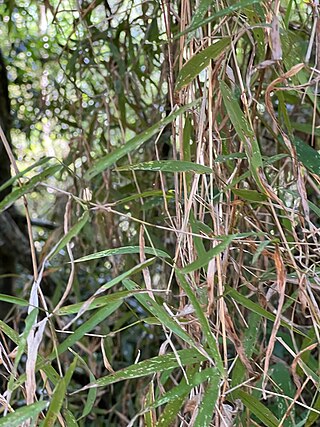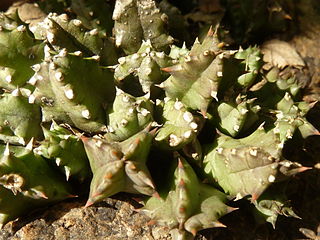
South Africa occupies the southern tip of Africa, its coastline stretching more than 2,850 kilometres from the desert border with Namibia on the Atlantic (western) coast southwards around the tip of Africa and then northeast to the border with Mozambique on the Indian (eastern) coast. The low-lying coastal zone is narrow for much of that distance, soon giving way to a mountainous escarpment that separates the coast from the high inland plateau. In some places, notably the province of KwaZulu-Natal in the east, a greater distance separates the coast from the escarpment. Although much of the country is classified as semi-arid, it has considerable variation in climate as well as topography. The total land area is 1,220,813 km2 (471,359 sq mi). It has the 23rd largest Exclusive Economic Zone of 1,535,538 km2 (592,875 sq mi).

The Drakensberg is the eastern portion of the Great Escarpment, which encloses the central Southern African plateau. The Great Escarpment reaches its greatest elevation – 2,000 to 3,482 metres within the border region of South Africa and Lesotho.

Tulbaghia is a genus of monocotyledonous herbaceous perennial bulbs native to Africa, belonging to the amaryllis family. It is one of only two known genera in the society garlic tribe within the onion subfamily. The genus was named for Ryk Tulbagh (1699–1771), one time governor of The Cape of Good Hope.

Kniphofia is a genus of perennial flowering plants in the family Asphodelaceae, first described as a genus in 1794. All species of Kniphofia are native to Africa. Common names include tritoma, red hot poker, torch lily and poker plant.

Euclea, from the Greek eukleia meaning "glory and fame", denotes a group of flowering plants in the Ebenaceae or ebony family. They were described as a genus by Linnaeus in 1774. The genus includes evergreen trees and shrubs, native to Africa, the Comoro Islands and Arabia. Several species are used for timber, producing a hard, dark heartwood timber similar to ebony.

Senecio barbertonicus, the Barberton groundsel or succulent bush senecio, is an evergreen succulent shrub of the family Asteraceae and genus Senecio, native to Southern Africa, named after one of its native localities Barberton and is now also being cultivated elsewhere for its drought resistance, clusters of sweetly scented, golden-yellow, tufted flower heads in winter and attractiveness to butterflies, the painted lady butterfly in particular.

Protea comptonii, also known as saddleback sugarbush, is a smallish tree of the genus Protea in the family Proteaceae. It is found in South Africa and Eswatini.

Garuleum is a genus of flowering plants in the family Asteraceae, native to southern Africa. Garuleum is one of eight genera of Calenduleae.

Prosphytochloa is a genus of African plants in the grass family. The only known species is Prosphytochloa prehensilis, native to Eastern Cape Province, KwaZulu-Natal, Eswatini, Mpumalanga, and Limpopo.

Eumorphia is a genus of African flowering plants in the daisy family. It has white flowers.

The Maputaland-Pondoland-Albany Hotspot (MPA) is a biodiversity hotspot, a biogeographic region with significant levels of biodiversity, in Southern Africa. It is situated near the south-eastern coast of Africa, occupying an area between the Great Escarpment and the Indian Ocean. The area is named after Maputaland, Pondoland and Albany. It stretches from the Albany Centre of Plant Endemism in the Eastern Cape Province of South Africa, through the Pondoland Centre of Plant Endemism and KwaZulu-Natal Province, the eastern side of Eswatini and into southern Mozambique and Mpumalanga. The Maputaland Centre of Plant Endemism is contained in northern KwaZulu-Natal and southern Mozambique.

Haworthiopsis limifolia, formerly Haworthia limifolia, is a species of flowering plant in the genus Haworthiopsis, native to southern Africa and first described in 1910.

Euclea racemosa is a small to medium-sized evergreen tree that is indigenous to the Indian Ocean coast of Africa from Egypt to South Africa, as well as in Comoros, Oman and Yemen.

Encephalartos senticosus is a species of cycad in the family Zamiaceae native to the Lebombo Mountains of Mozambique, Eswatini (Swaziland), and the KwaZulu-Natal province of South Africa. Prior to its description in 1996, Encephalartos senticosus had been confused with the closely related and sympatric Encephalartos lebomboensis. Both species are commonly known as the Lebombo cycad.
Barleria elegans is a species of plant in the family Acanthaceae. It is a spiny perennial herb or subshrub native to Angola and Namibia, and to Mozambique, Zimbabwe, Eswatini, and the Northern Provinces and KwaZulu-Natal in South Africa.

Thunbergia natalensis is a species of flowering plant in the family Acanthaceae, that is native to parts of mainland Africa, including South Africa, Eswatini, Tanzania, Ethiopia, Malawi and Zimbabwe. It occurs in forest margins, bush and grassland. Normally evergreen, it responds to dry or cold winters by losing its leaves and going dormant. Common names include dwarf thunbergia, Natal blue thunbergia and Natal blue-bell.

Huernia hystrix, the porcupine huernia, is a species of flowering plant in the family Apocynaceae, native to southeastern Africa. A succulent, it has gained the Royal Horticultural Society's Award of Garden Merit.
Athanasia grandiceps is a species of plant from South Africa. It belongs to the daisy family.















